Spotted lanternflies have been hitchhiking their way across Asia and the United States for several years. But why do they keep hitting the headlines?
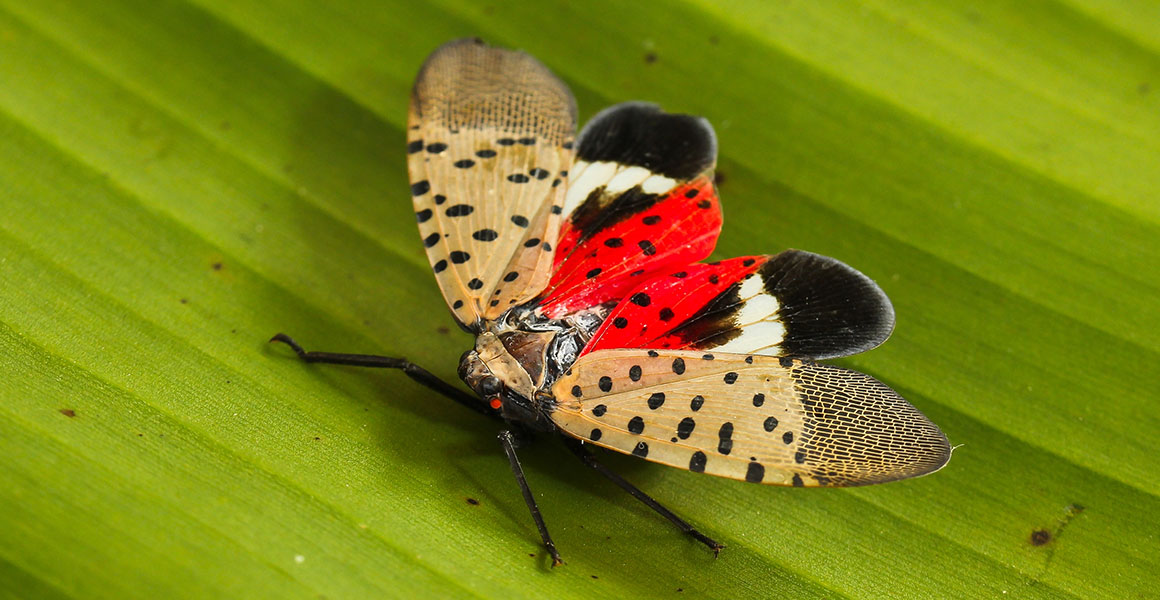
With their wings spread out, a spotted lanternfly could be mistaken for a butterfly, but they are actually planthoppers. © vm2002/ Shutterstock
An invasion of spotted lanternflies, Lycorma delicatula, may not sound as intimidating as that of the honeybee-munching ‘murder hornets’ that filled social media feeds in 2020, but their ability to swiftly disperse across new ranges is as concerning.
If their spread into new areas isn’t controlled, these insects can cause significant damage to both native and economically important plants.
What is a spotted lanternfly?
With their wings outspread, the spotted lanternfly could be mistaken for a colourful butterfly or moth, but they are actually a species of planthopper.
Planthoppers are what entomologists also call true bugs – meaning they are part of the order Hemiptera – and there are about 12,500 species of them found around the world. As their name suggests, they live and feed on plants and they’re strong jumpers.
Spotted lanternflies are native to China. They’ve also been found in adjacent countries in Asia, including South Korea and Japan, but researchers think that it’s highly likely that the insects have spread into these areas from China.
During their life cycle, spotted lanternflies go through four wingless stages of growth –known as instars – before becoming adults. In the first three instars after hatching, the tiny nymphs are black with white spots. In the fourth they become red and black with white spots and are about 1.5 centimetres long.
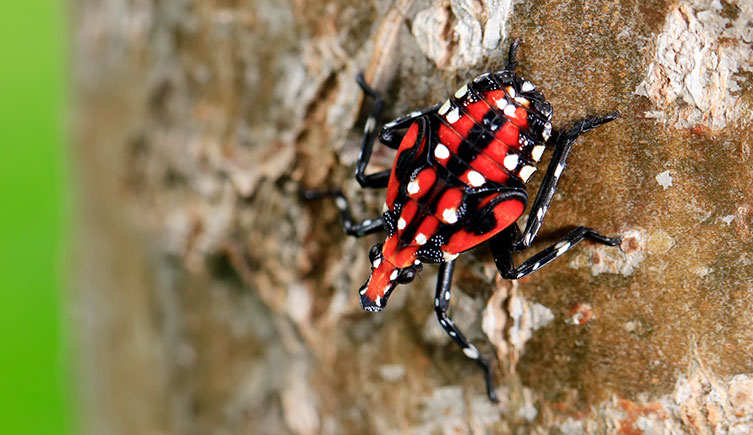
Spotted lanternflies go through four stages of growth. In the fourth instar they are bright red and black with white spots. © zhengzaishuru/ Shutterstock
They experience a significant change in appearance when they transform into winged adults. At this stage they are about 2.5 centimetres long and have light grey-brown forewings covered in dark spots. When startled or preparing to take flight they reveal their hindwings which are a striking scarlet with black and white patches. Their abdomens are yellow with black bands.
This species is univoltine, meaning that a generation lasts for one year. Spotted lanternflies hatch in May and are active until December with their eggs surviving through the winter into the next year.
Where are spotted lanternflies an invasive species?
Spotted lanternflies are considered an invasive species in South Korea and the United States. A species is invasive when it’s introduced, often unintentionally by people, to a non-native area and spreads, frequently causing harm to the new environment.
They were first reported as an introduced species in Korea in 1932. However, it’s possible that this may have been a misidentification as none were reported again until 2006, when they suddenly became a common sight.
In Japan, the insects may have occurred sporadically since the 1930s, but 2008 saw outbreaks of spotted lanternflies in Ishikawa Prefecture.
In 2014, Berks County in Pennsylvania was the site of the first spotted lanternfly sighting in the United States. Since then they’ve spread substantially throughout the eastern states year by year. The US Department of Agriculture (USDA) keeps a list of currently affected states.
There have also been some isolated sightings of dead spotted lanternflies further west, such as in the Midwestern state of Kansas in 2021, as well as in Utah, California and Oregon.
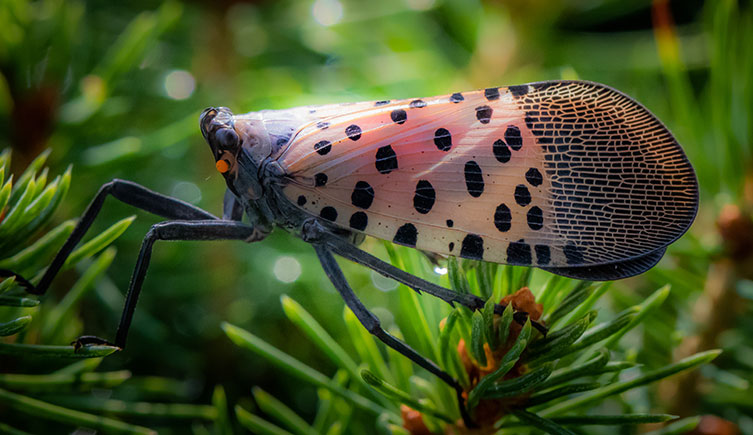
Adult spotted lanternflies have light grey-brown wings covered in dark spots. © cwieders/ Shutterstock
Spotted lanternflies are sap-sucking insects and their spread is potentially detrimental to the health of the plants they feed on in their introduced ranges. Some of these are economically important.
Grape vineyards, both in South Korea and the United States, appear to be particularly affected, jeopardising an industry worth billions of dollars. One vineyard in the United States reportedly faced a yield loss of up to 90%.
In Pennsylvania alone, if the spotted lanternfly isn’t contained, a 2019 study estimated that they could drain the state’s economy by up to $324 million (£240 million) each year and cause the loss of 2,800 jobs.
The insects also lack predators in their new ranges, so their population can quicky get out of control. As they are relatively inconspicuous when moving into new areas, often their spread goes unnoticed until too late.
How do spotted lanternflies damage plants?
Spotted lanternflies cause damage to plants by sucking sap, with the waste product of their diet encouraging fungal disease.
The spotted lanternfly’s preferred host plant is Ailanthus altissima, also known as the tree of heaven, which has been introduced to numerous countries including South Korea, Japan and the USA, and much of Europe. But the insects aren’t fussy. A variety of fruit, ornamental and woody trees are on the menu, as are vines, vegetables, herbs and grains.
Planthoppers produce honeydew. It’s a sugary liquid they, aphids and some scale insects excrete. Honeydew is attractive to other insects such as wasps, ants and bees, but can also cause sooty mould to grow on the plant it’s deposited on. This is a fungal disease that inhibits the plant’s ability to photosynthesise and create the energy it needs to survive and grow. It’s particularly problematic where the insects congregate in large numbers to feed.
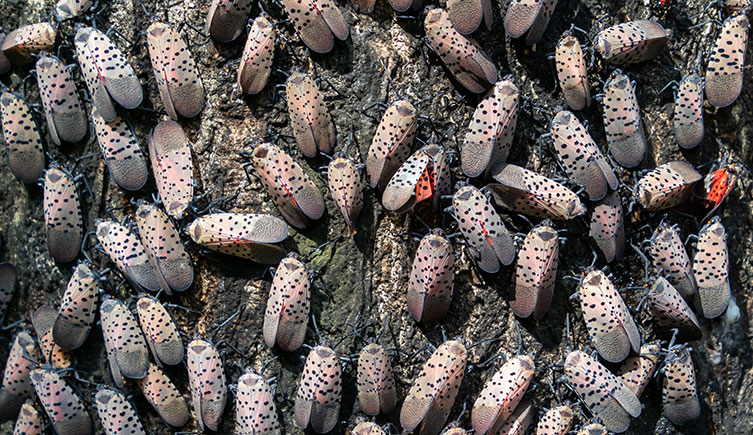
Spotted lanternflies can congregate on plants in large numbers. © Eric Dale/ Shutterstock
How are spotted lanternflies spreading?
In both South Korea and the United States the insects suddenly appeared and spread rapidly.
Adult spotted lanternflies have wings and can fly, but usually only cover short distances. With the unintentional help of people, their eggs are possibly the most mobile stage of their life.
Spotted lanternflies lay masses of 30-50 eggs in one place. These are coated by a waxy mud-coloured substance that dries and cracks, called an ootheca, which can camouflage them very effectively.
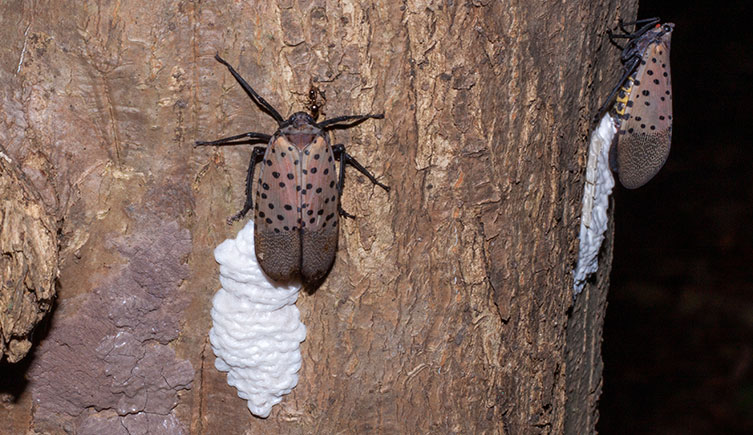
These insects tend to lay their eggs on flat surfaces. While they will be laid on immobile objects such trees or fenceposts, any outdoors item, such as furniture, camping equipment, pallets or boats, may be used.
People may then unknowingly transport the eggs into new regions and over long distances. The insect’s arrival in the USA may have been as a result of stowaway individuals or eggs in a shipping container, for example.
They’re also currently able to multiply unimpeded. In their natural range, spotted lanternfly numbers are thought to be kept under control by native predators, such as parasitic wasps. But there are seemingly fewer predators making an impact on their numbers where they’ve been introduced.
In the United States, assassin bugs and stink bugs have been seen to attack spotted lanternflies. Scientists have been analysing photos by members of the public of the planthoppers being preyed on. Among their most frequent predators seem to be birds, preying mantises, wasps and spiders. The impact these native predators have on spotted lanternfly populations is yet to be seen, however.
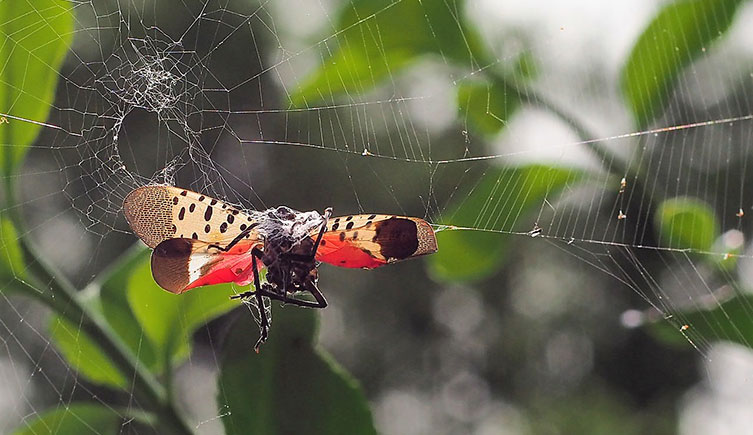
More research is needed to understand what predators could help to keep spotted lanternfly numbers under control in the United States. © Monocletophat123 via Wikimedia Commons (CC BY-SA 4.0)
While there are lower chances of the spotted lanternfly being able to survive in the UK than other parts of the world should they be introduced, it’s a possibility that can’t yet be ruled out. Their eggs can survive cold winters but it’s not clear how warm summers need to be for the insects to complete their life cycle. Their preferred host plant A. altissima is also present in the UK, particularly in east and south-east England.
Are spotted lanternflies dangerous?
Spotted lanternflies aren’t physically dangerous to humans. They can’t bite as they have only specialised sap-sucking mouthparts.
There have been some suggestions that the insects might be toxic to pets. Currently there is no evidence to support these claims, but more research is needed in this area.
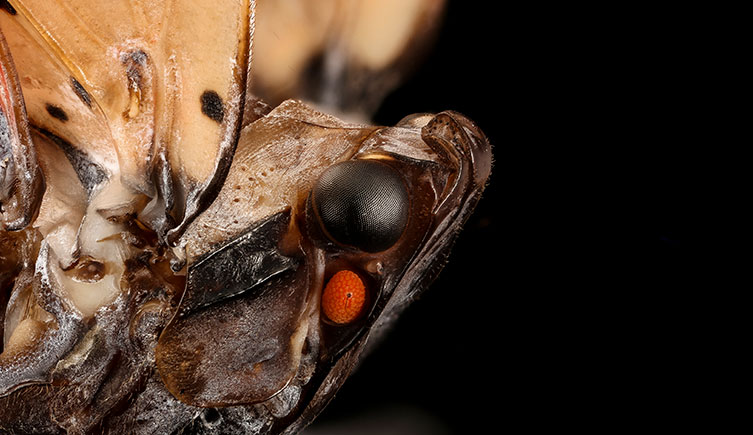
Spotted lanternflies have mouthparts that are specially adapted for slurping plant sap. © USGS Bee Inventory and Monitoring Lab via Flickr (Public Domain)
What to do if you see a spotted lanternfly in the United States
Spotted lanternflies are present in multiple states and each has its own method for managing reports of sightings.
There are several actions individuals can take to help slow the spread of spotted lanternflies, including checking your vehicle and items being moved for the insects and their eggs, inspecting your trees for signs of them and where possible parking away from trees with your windows closed, particularly in areas where spotted lanternflies are known to be present.
Numerous counties in affected states have implemented quarantine zones, where there are rules and permits needed for moving items in, out and within these areas.
The USDA advises that spotted lanternfly egg masses should be smashed and scraped off surfaces before they can hatch. They also note that live spotted lanternflies within quarantine areas should be destroyed, and those found outside these areas should be photographed or captured and reported to your local Extension office or State Plant Regulatory Official.

Protecting our planet
We're working towards a future where both people and the planet thrive.
Hear from scientists studying human impact and change in the natural world.
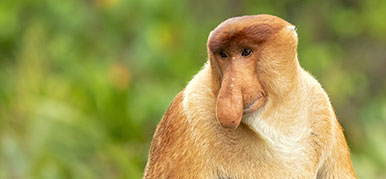
What on Earth?
Just how weird can the natural world be?
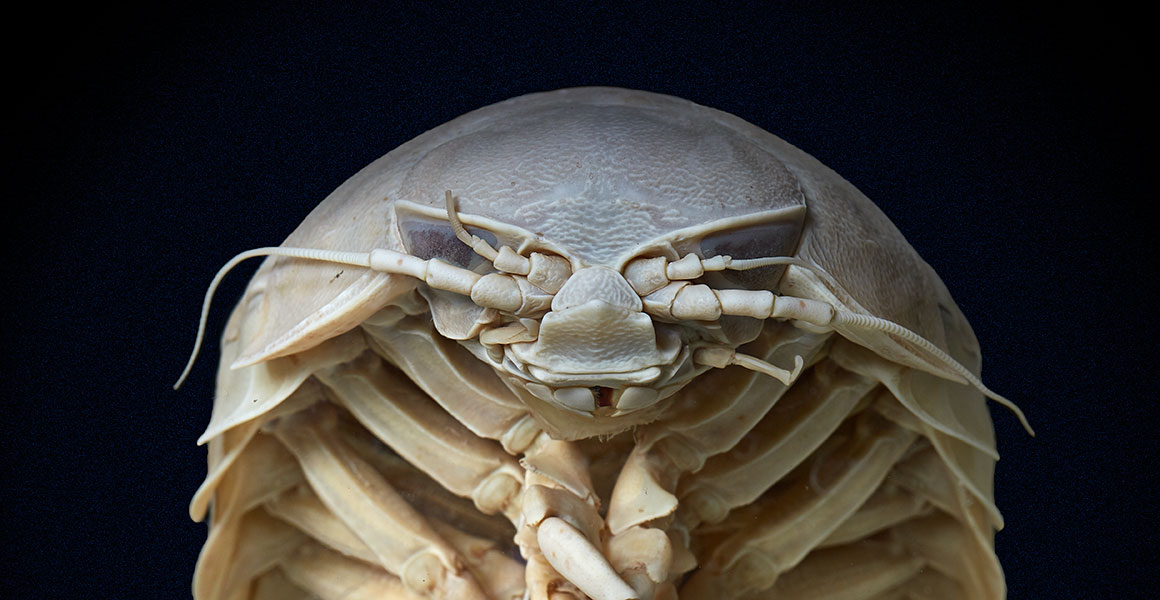
Ever wondered if an isopod could eat strawberries?
We haven’t either. But you could find out in one of our new online courses, designed for all levels of interest in the natural world.
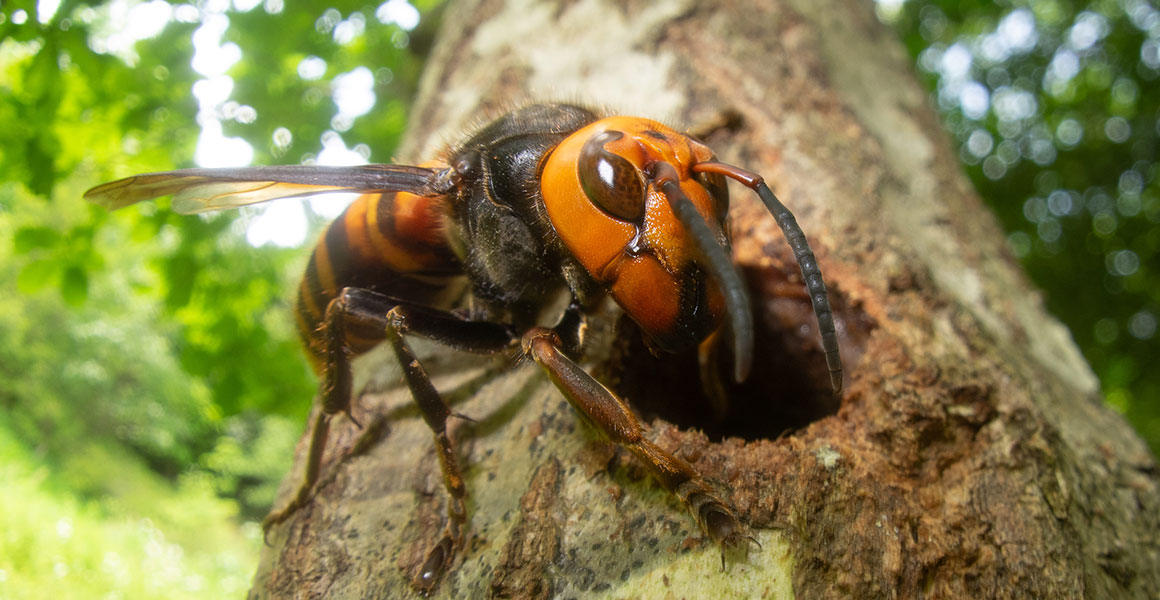
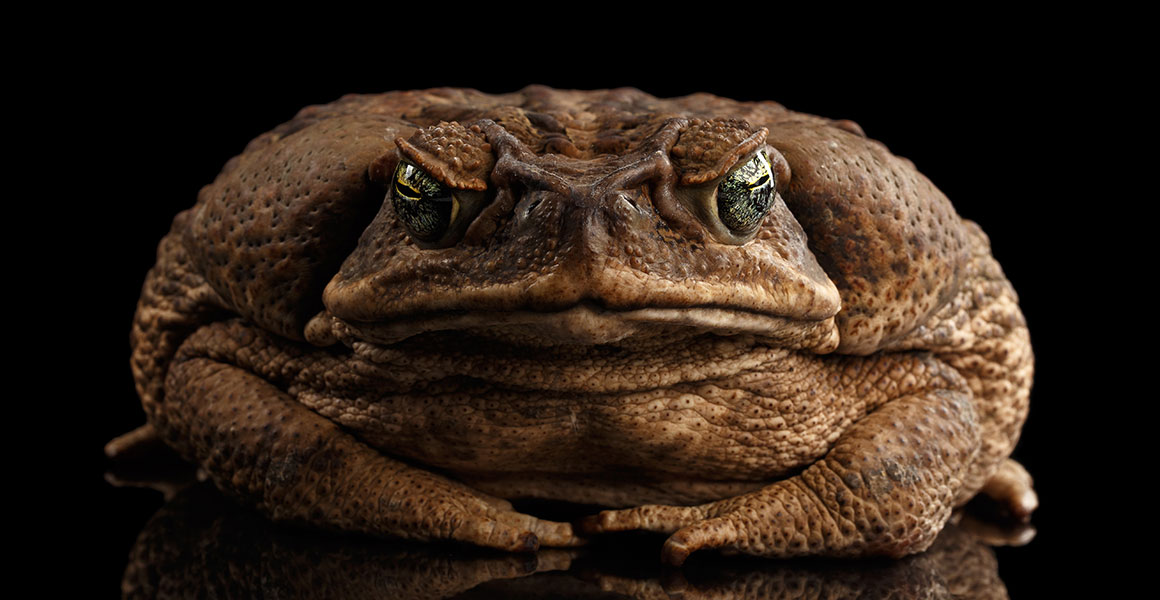
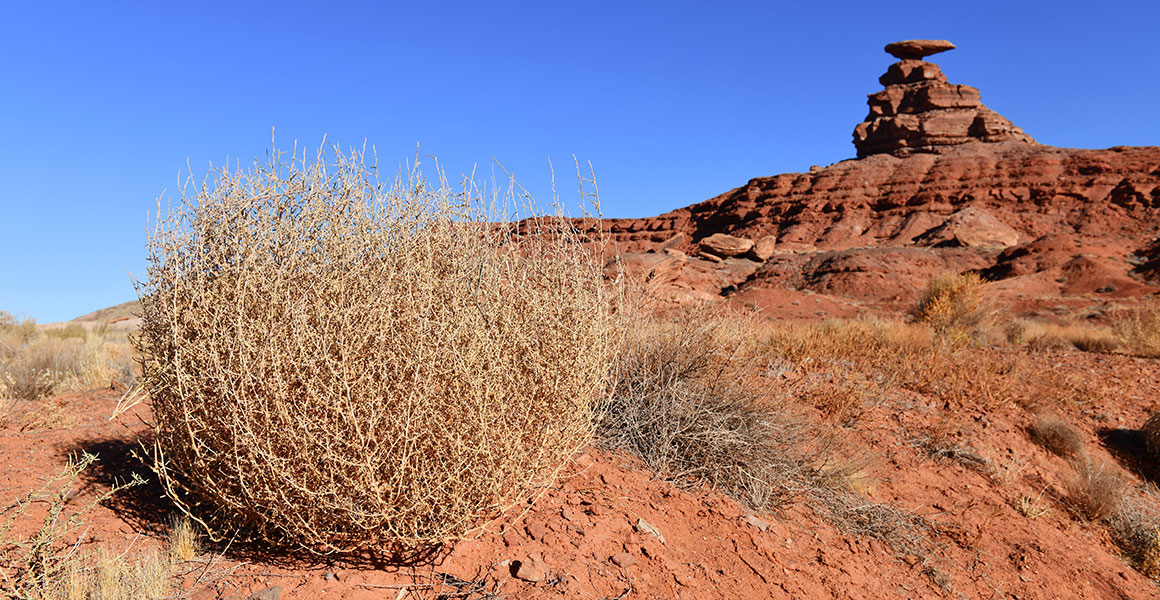

Don't miss a thing
Receive email updates about our news, science, exhibitions, events, products, services and fundraising activities. We may occasionally include third-party content from our corporate partners and other museums. We will not share your personal details with these third parties. You must be over the age of 13. Privacy notice.
Follow us on social media